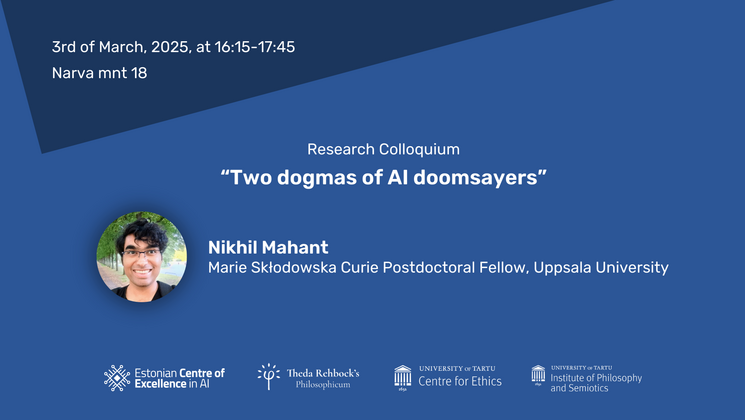Research news: personality and obesity, ethics of immigration, coronavirus pandemic and wound treatment

Social Sciences
Fat mass is linked to less openness, lean mass to higher assertiveness
By studying the personality-body weight associations, researchers hope to understand some reasons of obesity. According to previous studies, people with higher body mass index (BMI) were less conscientious, while at the same time more assertive and experiencing more positive emotions. However, BMI has a drawback: it does not allow to distinguish the proportion of fat mass and lean body mass in body weight. For example, BMI is also high in people with low body fat and high muscle mass. In other words, a gym addict who hates fatty food may have the same BMI as a chips-addicted sport hater.
Therefore, the University of Tartu researchers calculated the relative fat mass and the basal metabolic rate of 3,535 Estonian Biobank participants. The higher relative fat mass was associated with several personality traits, like lower conscientiousness and greater tender-mindedness, but most clearly, with less openness to experience. Body fat mass did not correlate with positive emotions or assertiveness, or dominance. However, basal metabolic rate, which also indicates greater lean mass or muscle mass, was associated with assertiveness. The decomposition of BMI into relative fat mass and basal metabolic rate gives a clearer picture and allows to make hypotheses about the causal links between personality and obesity.
Read more in the article published in the journal Physiology & Behavior.
Further information: Kadri Arumäe, doctoral student of psychology, kadriarumae@gmail.com
Rene Mõttus, Project Specialist, rene.mottus@ut.ee
Uku Vainik, Associate Professor of Behavioural Genetics and Research Fellow of the Department of Experimental and Cognitive Psychology, Institute of Psychology, uku.vainik@ut.ee
Arts and Humanities
Realism in the ethics of immigration
The ethics of immigration is currently marked by a division between realists and idealists. The idealists generally focus on formulating morally ideal immigration policies, for example, opening borders almost completely to potential immigrants. The realists, however, tend to dismiss these ideals as far-fetched and infeasible and seek to resolve pressing immigration-related issues by advancing policy recommendations that they consider to be actionable.
James Stephen Pearson, Visiting Research Fellow in Practical Philosophy of the University of Tartu, challenged this concept of realism. First, he studied the kind of realism which some political theorists call “problem-solving” realism and which they consider unworkable due to its unacceptable vagueness because it is difficult to establish what exactly can be regarded a feasible solution. The researchers have even found that the so-called realist philosophies of immigration are often based on ambitious ideals that are unlikely to be achieved, for example, creating a homogenous national culture.
Pearson in his article therefore concludes that the conception of what constitutes a genuinely realist approach to the immigration problem needs to be revised.
Read more in the article published in the journal Philosophy & Social Criticism.
Further information: James Stephen Pearson, Visiting Research Fellow in Practical Philosophy of the University of Tartu, james.pearson@ut.ee
Medicine
Effective curbing of Covid-19 pandemic requires responsibility both from the state and the people
University of Tartu researchers studied the prevalence of SARS-CoV-2 and changes in the prevalence in the adult general population during the first year of the coronavirus pandemic. The percentage of people who tested positive fell from 0.27% in April 2020 to 0.04% by the end of May, and remained very low until the end of August. This was followed by an increase in November, escalating to 2.69% in January 2021.
The results of the study show that the communication of measures to restrict the transmission of the infection did not reach the population evenly – the risk of infection varied by region and was higher among members of large households and non-Estonian speakers. However, the study shows that although strict restrictions stopped the transmission, the easing or lifting of the measures led to new and sizable outbreaks. The occurrence of Covid-19 in waves has been reconfirmed in the course of the pandemic over the next two years.
Data from nasopharyngeal testing and questionnaires describing factors associated with the infection risk were used in the research. From 23 April 2020 to 2 February 2021, results were received from 34,915 individuals and 27,870 samples from 11 consecutive studies.
Read more in the article published in the journal Public Health.
Further information: Anneli Uusküla, Professor of Epidemiology, anneli.uuskula@ut.ee
Science and Technology
A protein found in liver promotes the regeneration of skin cells
Human skin is designed to act as a barrier to the environment, providing mechanical and chemical protection, and preventing pathogen invasion and microbial growth. When the skin is wounded, this barrier is broken. A smaller wound usually heals in a few days, a larger one in a few weeks. In more serious cases, however, the healing of a wound may take months.
Looking for solutions to enhance wound healing, University of Tartu researchers studied the role of OLFM4, a protein also found in damaged liver, in skin regeneration. They found that its use will significally accelerate the healing of the wounds. In the future, the use of OLFM4 can therefore enhance the therapeutic potential of wound treatment.
Read more in the article published in the journal Cellular and Molecular Life Sciences.
Further information: Viljar Jaks, Associate Professor in Cell Biology, viljar.jaks@ut.ee





